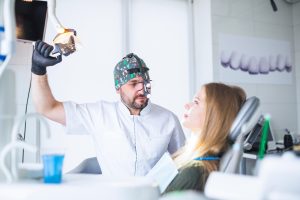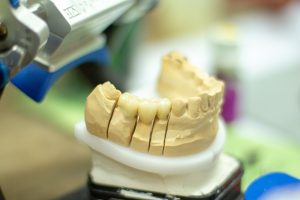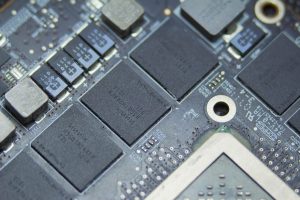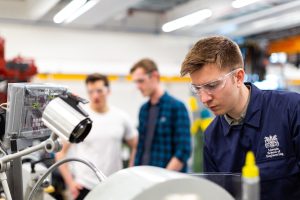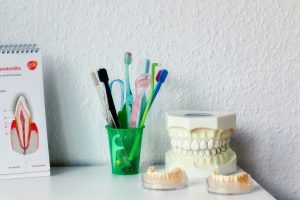The world of dentistry has undergone significant transformations in the past few years. Among the most impressive advancements is the advent of digital dentures—a cutting-edge approach to traditional dentures that offers greater precision, comfort, and speed. But what exactly are digital dentures, and how do they differ from traditional ones? In this guide, I will explore everything you need to know about digital dentures, their benefits, how they are made, and why they are becoming increasingly popular.
Understanding Digital Dentures: A New Era in Prosthodontics
Digital dentures represent a major shift in the way dental professionals create and fit dentures. In essence, these are dentures that are designed and manufactured using digital technologies such as 3D scanning, computer-aided design (CAD), and 3D printing. The entire process— from scanning the patient’s mouth to producing the final product— is done digitally, which allows for a much more accurate, customized, and efficient approach compared to traditional methods.
You also may like to read this: Can You Change Cache in Digital Performer? A Complete Guide for Optimizing Performance
How Are Digital Dentures Different from Traditional Dentures?
Before we dive into the specifics, it’s important to understand how digital dentures compare to the conventional dentures many people are familiar with. Traditional dentures are typically made through a labor-intensive process, which involves taking molds of the patient’s mouth, sending these molds to a dental laboratory, and manually crafting the dentures by hand.
In contrast, digital dentures are created through a streamlined digital workflow:
- Scanning: Instead of traditional molds, a 3D scanner is used to capture a detailed image of the patient’s mouth and jaw.
- Designing: Using specialized software, the dentist or dental technician creates a virtual model of the dentures, customizing it to fit the patient’s specific needs.
- Manufacturing: Using 3D printing or CNC milling, the final dentures are produced with precise accuracy, often in a fraction of the time that traditional methods would require.
Key Benefits of Digital Dentures
Digital dentures are transforming the denture-making process, and here’s why they stand out:
1. Precision and Customization
One of the primary advantages of digital dentures is the level of customization they offer. The precise 3D scanning technology allows for an exact fit of your mouth’s contours, leading to better comfort and performance. Traditional dentures often require several fitting sessions to ensure they fit correctly, whereas digital dentures can be made to exact specifications right from the start, reducing the need for adjustments.
2. Faster Turnaround Time
The time required to create and fit dentures using traditional methods can take weeks due to multiple appointments and the manual labor involved. With digital dentures, the process can be completed in a matter of days, allowing patients to receive their final product much more quickly.
3. Enhanced Comfort
Thanks to the precise design and fit, digital dentures are generally more comfortable to wear compared to traditional ones. There’s less chance of irritation or sore spots because the dentures are tailored specifically to your mouth, improving overall wearability.
4. Durability and Strength
Digital dentures are often made from stronger, more durable materials that can withstand everyday wear and tear. Many digital dentures are made from materials like PMMA (Polymethyl methacrylate) or Zirconia, which offer excellent strength and longevity.
5. Improved Aesthetics
Digital dentures are not just about functionality but also about improving appearance. With digital technology, it’s possible to design dentures that mimic the natural look of real teeth, including their color, shape, and texture. This results in dentures that are more lifelike and aesthetically pleasing.
The Process of Creating Digital Dentures
The process of creating digital dentures typically involves the following steps:
Step 1: Initial Consultation and 3D Scanning
Your journey begins with a consultation with your dentist, who will evaluate your needs. Using a digital intraoral scanner, your dentist will capture a highly detailed 3D image of your mouth, gums, and jaw. This digital impression replaces the traditional messy impression material, providing an accurate scan that can be used to design your custom dentures.
Step 2: Designing the Dentures
Once your scan is complete, it is sent to a dental laboratory where the technician uses specialized CAD software to design your dentures. The design is completely customizable based on your facial anatomy, jaw alignment, and aesthetic preferences.
Step 3: Manufacturing the Dentures
Once the design is finalized, the dentures are created using advanced technologies like 3D printing or CNC milling. These methods allow for highly detailed, precise manufacturing of your dentures, which results in a better fit and more durable product.
Step 4: Fitting and Final Adjustments
After your dentures are created, you will return to the dentist for a fitting. While digital dentures require fewer adjustments than traditional ones, your dentist may make minor tweaks to ensure the best possible fit and comfort. Digital dentures can also be adjusted with greater ease over time, making them more adaptable if your needs change.
Pros and Cons of Digital Dentures
Pros:
- Precision Fit: Digital scanning eliminates human error, resulting in a better fit and more comfort.
- Faster Production Time: Digital dentures can be produced much more quickly than traditional ones.
- Customization: The ability to customize every aspect of the denture’s design, from fit to appearance.
- Durability: Materials used in digital dentures are often stronger and longer-lasting.
- Improved Comfort: The precise fit reduces the risk of discomfort or irritation during wear.
Cons:
- Initial Cost: While digital dentures can be more cost-effective in the long run, the initial investment in equipment for dental practices can make them pricier upfront.
- Not Available Everywhere: Not all dental practices are equipped with the necessary technology to create digital dentures.
- Technology Dependency: Issues with the software or equipment could cause delays or complications in the manufacturing process.
Comparison Table: Digital vs. Traditional Dentures
| Feature | Digital Dentures | Traditional Dentures |
| Precision | High precision with 3D scanning | Potential for inaccuracies in molding |
| Production Time | Days (Faster) | Weeks (Longer) |
| Comfort | More comfortable (custom fit) | Can require several adjustments |
| Durability | Stronger, longer-lasting materials | Less durable, may wear down faster |
| Customization | Fully customizable in design | Limited customization options |
| Aesthetic Appearance | Natural look with lifelike aesthetics | Basic appearance, may not be as lifelike |
| Cost | Higher initial cost, lower long-term cost | Lower initial cost, higher long-term cost |
Tech Specs for Digital Dentures
- Scanner: Intraoral 3D scanners such as the iTero Element or Carestream CS3600.
- CAD Software: Dental design programs like Exocad, 3Shape, and Dentrix.
- Materials: High-quality materials like PMMA, Zirconia, and Ceramic for longevity and natural aesthetics.
- 3D Printing Technology: SLA or SLS (Stereolithography or Selective Laser Sintering) for high-precision manufacturing.
- CNC Milling: For those who prefer a more traditional yet precise manufacturing method.

